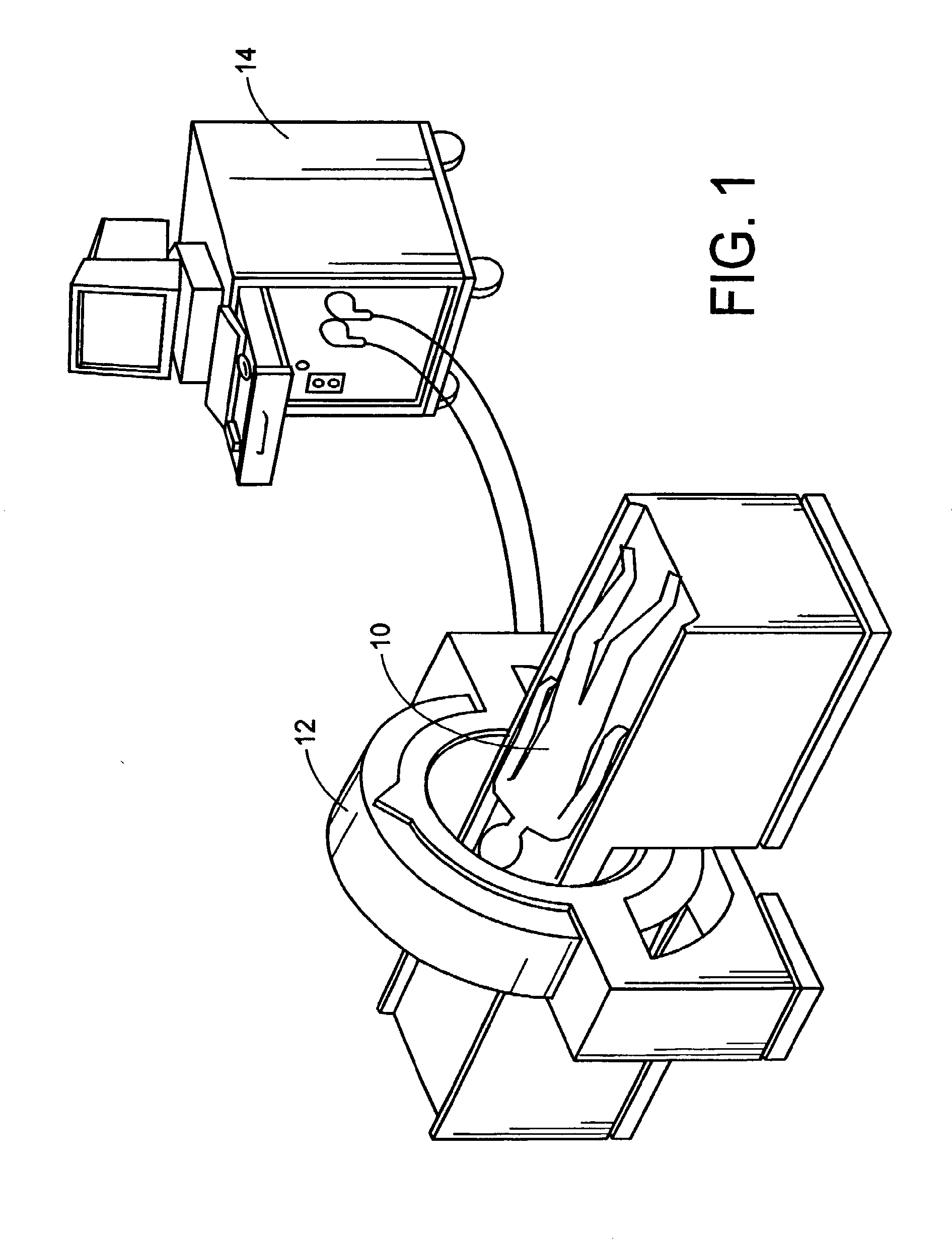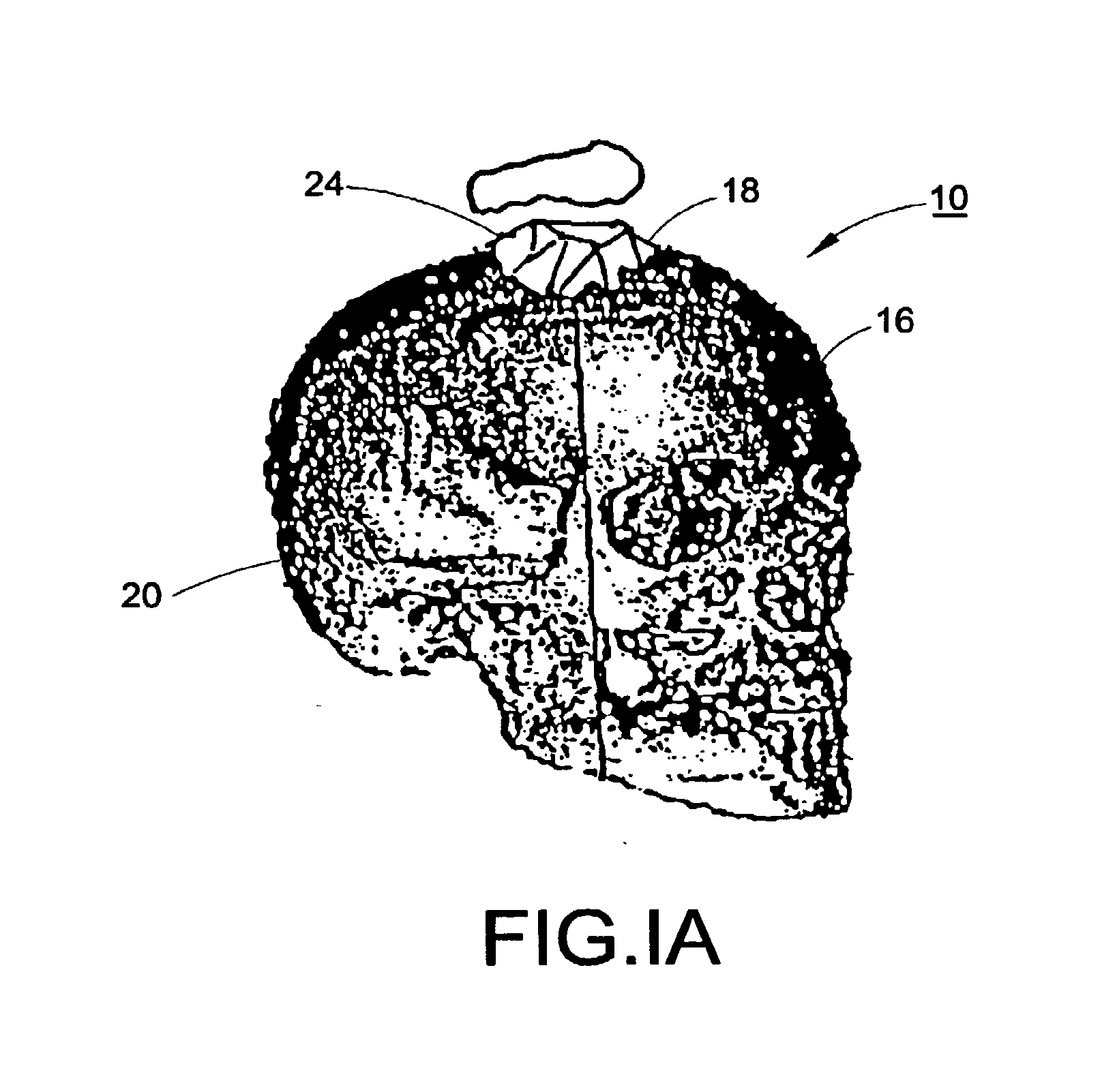Methods and systems for producing an implant
a technology of implants and production methods, applied in the field of implants to replace bony structures, can solve the problems of limited relevance of their methods and implants to the relevant field, ineffective and time-consuming segmentation techniques, and computationally expensive detection of anatomical surfaces as complex as the skull or soft tissue face with prior information alone, so as to save time
- Summary
- Abstract
- Description
- Claims
- Application Information
AI Technical Summary
Benefits of technology
Problems solved by technology
Method used
Image
Examples
Embodiment Construction
[0114]With reference to FIGS. 1, 1A, and 2, a subject 10, or patient, is imaged using an imaging device 12 in a step A. Preferably, the image is a volumetric image obtained using a computerized tomography (“CT”) scanner according to a preferred protocol. However, other images, obtained using other imaging techniques (e.g., magnetic resonance) are also contemplated. Once the data is captured from the CT scanner 12, it is stored in a processor 14 (preferably, a transportable storage medium) in a step B (although it could be transferred over a network). Then, the processor 14 segments the data in a step C for extracting a region of the image including a target tissue (e.g., liver, lung, or hard tissue such as bone) 16 of interest within the subject; the extracted region 16 includes two (2) portions (i.e., one portion having a defect 18 and one portion 20 without the defect). Preferably, the non-defective portion 20 substantially surrounds the defective portion. An external surface of t...
PUM
 Login to View More
Login to View More Abstract
Description
Claims
Application Information
 Login to View More
Login to View More - R&D
- Intellectual Property
- Life Sciences
- Materials
- Tech Scout
- Unparalleled Data Quality
- Higher Quality Content
- 60% Fewer Hallucinations
Browse by: Latest US Patents, China's latest patents, Technical Efficacy Thesaurus, Application Domain, Technology Topic, Popular Technical Reports.
© 2025 PatSnap. All rights reserved.Legal|Privacy policy|Modern Slavery Act Transparency Statement|Sitemap|About US| Contact US: help@patsnap.com



